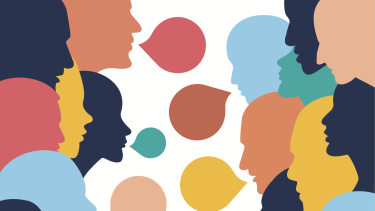
As the Children Watch…
In my travels to schools, one of the things I explore with adults and students alike are their reflections on life and learning over the last two years. I invariably start with the idea that humankind has not seen anything quite like this for over a hundred years. I am curious about what people are observing and learning, how they feel, and how they are making sense of all this. Of course, I get a wide range of responses from the various people I engage. The fact is that a lot has happened in the world, and some of us are still trying to make sense of it.
One of the topics that invariably comes up is that it seems we have become a little more polarized as a society over the last two years. People don't have a way of quantifying this, but it is difficult to refute that perspective considering things we see on mainstream and social media. For example, one of the observations has been that the pandemic further exposed many of the inequities that existed in society. The calls for Truth and Reconciliation, #BlackLivesMatter, #MeToo movements stand as prominent examples of issues that have become a more significant part of public discourse. One might also observe the #AntiVax movement and the #Occupy movements as another source of public discourse.
As the adults in our society struggle with these very complex issues, I cannot help but wonder how our students are processing these events. What will be their lasting memory of this time? Years from now, will they look at this time as a watershed moment in their life that helped shape their thinking about the world they live in? Or will 2020-22 be a series of experiences with no particular significance?
I quickly searched the big ideas associated with the Social Studies Curriculum to see where there may be intersections between some of these thorny public issues and the conceptual understanding expected of students as a way of exploring a place where students might try to understand these issues. My quick review identified several key concepts and the grade level where students are expected to demonstrate understanding of these social phenomena:
- Changing ideas about the world created tension between people wanting to adopt new ideas and those wanting to preserve established traditions (8).
- Collective identity is constructed and can change over time (9).
- Disparities in power alter the balance of relationships between individuals and between societies (9).
- Historical and contemporary injustices challenge the narrative and identity of Canada as an inclusive, multicultural society (10).
- Worldviews lead to different perspectives and ideas about developments in Canadian society (10).
- Understanding the diversity and complexity of cultural expressions in one culture enhances our understanding of other cultures (11).
- Individual worldviews shape and inform our understanding of social justice issues (12).
As you can see, there is no shortage of opportunities for students to make connections between the world emerging before their eyes and the things we expect them to understand as part of being an educated citizen. I know that students in our classrooms are tackling these issues daily as they try to make sense of the behaviour of the adults around them. It is my sincere hope that as they begin to make sense of these issues, that we adults are behaving in ways that emulate the kind of problem-solving, critical thinking and communication we expect of them.